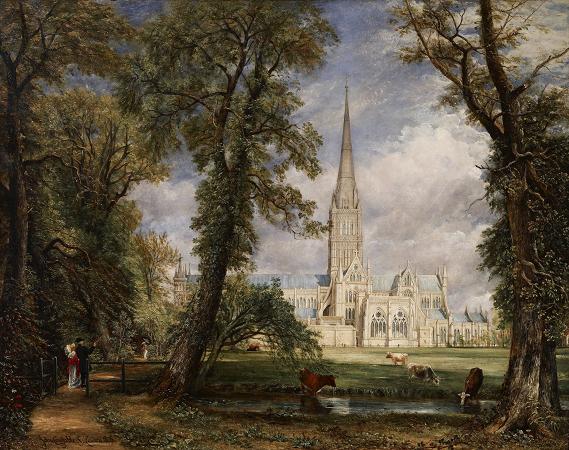Landscape with Country House. An English country house is a large house or mansion in the English countryside. Such houses were often owned by individuals who also owned a town house. This allowed them to spend time in the country and in the city, hence, for these people, the term distinguished between town and country. However, the term also encompasses houses that were, and often still are, the full-time residence for the landed gentry that ruled rural Britain until the Reform Act 1832. Frequently, the formal business of the counties was transacted in these country houses. With large numbers of indoor and outdoor staff, country houses were important as places of employment for many rural communities. In turn, until the agricultural depressions of the 1870s, the estates, of which country houses were the hub, provided their owners with incomes. However, the late 19th and early 20th centuries were the swansong of the traditional English country house lifestyle. Increased taxation and the effects of World War I led to the demolition of hundreds of houses; those that remained had to adapt to survive. While a chateau or a Schloss can be a fortified or unfortified building, a country house, similar to an Ansitz, is usually unfortified. If fortified, it is called a castle, but not all buildings with the name castle are fortified. The term stately home is subject to debate, and avoided by historians and other academics. As a description of a country house, the term was first used in a poem by Felicia Hemans, The Homes of England, originally published in Blackwood's Magazine in 1827. In the 20th century, the term was later popularised in a song by Noel Coward, and in modern usage it often implies a country house that is open to visitors at least some of the time In England, the terms country house and stately home are sometimes used vaguely and interchangeably; however, many country houses such as Ascott in Buckinghamshire were deliberately designed not to be stately, and to harmonise with the landscape, while some of the great houses such as Kedleston Hall and Holkham Hall were built as power houses to dominate the landscape, and were most certainly intended to be stately and impressive. In his book Historic Houses: Conversations in Stately Homes, the author and journalist Robert Harling documents nineteen stately homes; these range in size from the vast Blenheim palace to the minuscule Ebberston Hall, and in architecture from the Jacobean Renaissance of Hatfield House to the eccentricities of Sezincote. The book's collection of stately homes also includes George IV's Brighton town palace, the Royal Pavilion. The country houses of England have evolved over the last five hundred years. Before this time, larger houses were usually fortified, reflecting the position of their owners as feudal lords, de facto overlords of their manors. The Tudor period of stability in the country saw the building of the first of the unfortified great houses. Henry VIII's Dissolution of the Monasteries saw many former ecclesiastical properties granted to the King's favourites, who then converted them into private country houses. Woburn Abbey, Forde Abbey and many other mansions with abbey or priory in their name became private houses during this period. Other terms used in the names of houses to describe their origin or importance include palace, castle, court, hall, mansion, park, house, manor, and place. It was during the second half of the reign of Elizabeth I, and under her successor, James I, that the first architect-designed mansions, thought of today as epitomising the English country house, began to make their appearance. Burghley House, Longleat House, and Hatfield House are among the best known examples of the showy prodigy house, often built with the intention of attracting the monarch to visit. By the reign of Charles I, Inigo Jones and his form of Palladianism had changed the face of English domestic architecture completely, with the use of turrets and towers as an architectural reference to the earlier castles and fortified houses completely disappearing. The Palladian style, in various forms, interrupted briefly by baroque, was to predominate until the second half of the 18th century when, influenced by ancient Greek styles, it gradually evolved into the neoclassicism championed by such architects as Robert Adam. Some of the best known of England's country houses were built by one architect at one particular time: Montacute House, Chatsworth House, and Blenheim Palace are examples.
more...









